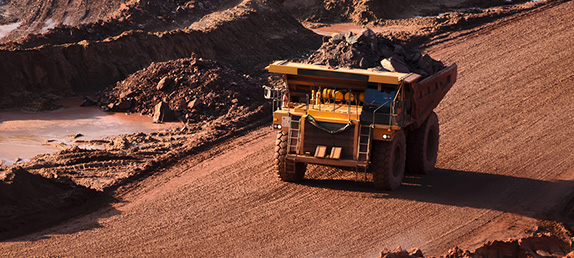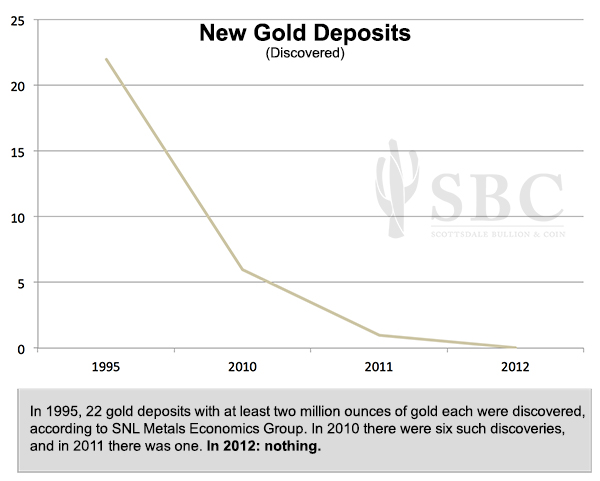
Gold is extremely rare. For centuries, this precious metal has been coveted by humans all over the world. Gold’s scarcity and beauty has made it one of the most sought after items in the history of man. And now it is running out.
The Wall Street Journal predicts that we may only be two decades away from exhausting the world’s gold supply if the current rate of mining stays the same. Some experts blame the current situation on the booming gold prices of the 1990s and early 2000s. The incentive to mine large amounts of the yellow metal was enormous and companies spared no expense to pull as much of it from the Earth as possible.

Also, despite a huge increase in exploration costs, gold discoveries have reached new lows. In fact, according to SNL Metals Economics Group, in 2012 there were no new discoveries. “Deposits are simply harder to discover,” John Muntean, an associate professor of mines and geology at the University of Nevada told the Wall Street Journal.
Increased costs and a precipitous drop in discoveries would not be so devastating if it was not for the price of gold leveling off around $1,300 an ounce. Mining companies are willing to move a lot of earth to reach lower grades of gold if the price of gold is high. However, when gold prices are down, mining companies are not willing to attempt pricier methods of discovery. It is thought that the only untapped gold mines left on the planet are located far below the surface or in remote areas of the artic that would be extremely difficult (and extremely expensive) to reach. The Wall Street Journal article tells the story of a mine in China where miners would need to dig up 100 metric tons of rock to produce just one ounce of gold. This is not a sustainable business model at the current price of gold.
Conditions are becoming bad enough that gold miners are starting to discuss combining resources in order to increase efficiencies. According to the article, Stephen Letwin, the chief executive of Canadian gold miner IAMGold Corp., compared the gold industry’s current state with that of the oil industry in the early 1990s, when worries over dwindling resources led big companies to takeover midsize ones.
How much gold is left in the earth?
At this point, the U.S. Geological Survey has found that global gold production was equal to 5.1% of the 54,000 tons in available reserves last year. This means that if miners continue to go through the available reserves at the current rate, then the supply of gold will be exhausted in 19.5 years.
The only way to replenish supplies will be to spend more money on exploration and it remains to be seen if the miners are willing to take on the extra costs. They may have to wait for the price of gold to shoot up, perhaps due to a global shortage, in order to justify taking on the additional risk. Until then, supplies will dwindle, making it more and more likely that the laws of supply and demand will start to have a major effect on gold prices.

